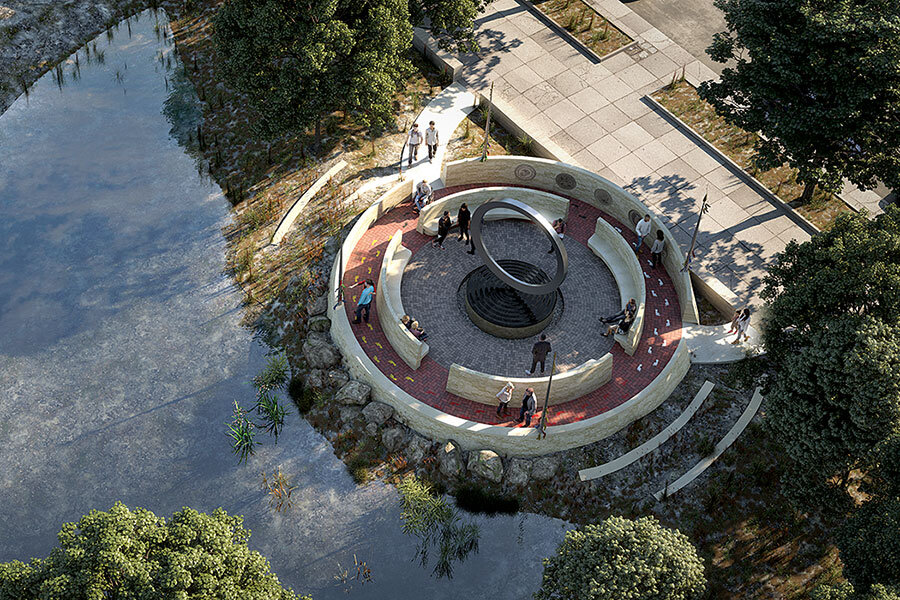Native American veterans get spotlight with upcoming memorial
Although Washington, D.C., is known for its many commemorations recognizing Americans who have shaped and served the country in various capacities, there has not historically been a landmark honoring the contributions of American Indians, Alaska Natives, and Native Hawaiians who have served in the military dating back to colonial times. That will change with the National Native American Veterans Memorial, which will be constructed on the grounds of the Smithsonian’s National Museum of the American Indian.
“Native Americans, including American Indians, Alaska Natives, and Native Hawaiians, have served their country honorably and in great numbers since the Revolutionary War and they continue to do so today,” says project curator Rebecca Head Trautmann in an e-mail interview. “It’s time for this extraordinary tradition of service to be recognized and honored with a memorial on the National Mall.” Ground is expected to be broken on Sept. 21, 2019.
The Smithsonian museum was commissioned by Congress to create a memorial to provide “all Americans the opportunity to learn of the proud and courageous tradition of service by Native Americans in the Armed Forces of the United States.” The museum conducted more than 35 community consultations with Native veterans, active-duty service members, tribal leaders, and family and community members. “The memorial must be inclusive of all Native American veterans – American Indian, Alaska Native, and Native Hawaiian men and women, from all branches of service and all eras from the Revolutionary War to the present and going forward,” says Ms. Trautmann. “It should reflect Native spirituality, in a very inclusive way, [and] it should create a space for gathering, remembrance, and reflection, and be a place for healing.”
A jury made up of Native and non-Native artists and scholars evaluated the 120 initial design concepts received, and Harvey Pratt’s “Warriors’ Circle of Honor” design was chosen. The design features a circular memorial with elements that resonate among Native cultures, including a circle, drum, fire, and water. Trautmann describes the design as “simple and powerful, timeless and inclusive.”
“There are things that are common among all tribes, ceremonially and traditionally – water, fire, earth, wind,” says Mr. Pratt. “I also included the circle because it represents strength, unity, and timelessness. My hope is that those who enter will find an element that speaks to their tradition and ceremony.” The memorial will also include four lances representing valor and four feathers representing awards. Prayer cloths or other elements that resonate with particular tribes can be tied to the base of the lances, he says, and “when the breeze blows the prayer cloths, it will resend the prayer.”
Pratt, a traditional Southern Cheyenne chief, is a multimedia artist who retired after more than 50 years of service in law enforcement, with roles as an agent, assistant director, and forensic artist for the Oklahoma State Bureau of Investigation. He also served in the US Marine Corps in the Vietnam War.
“The whole purpose was to make it a place where people could come, feel comforted and to feel safe, and possibly even heal their emotional and physical wounds,” says Pratt in a phone interview. “I hope that it will educate people to the commitment that Native American veterans have had to this country. They fought for this nation before they were even citizens, and they continue to fight for this country.”
According to the museum, American Indians have served in every major conflict since the Revolutionary War. Code talkers used their Native languages to transmit coded messages during World War I and II. More than 42,000 Native Americans served in Vietnam, and Alaska Natives served in World War II despite not being paid for their service.





